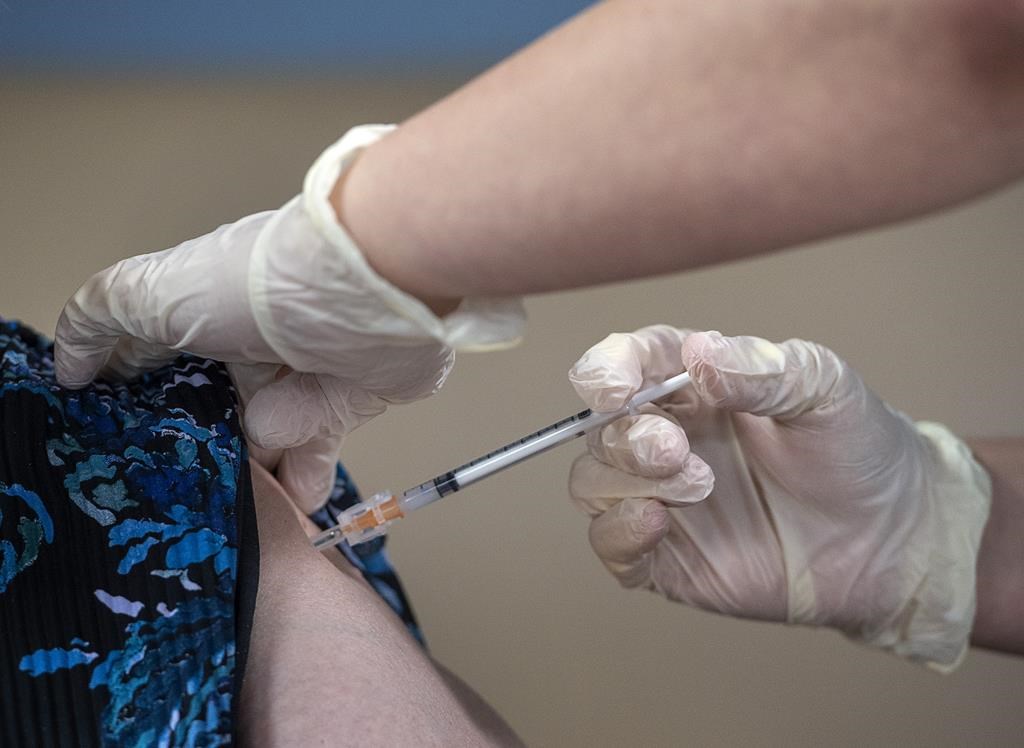Two pop-up clinics in Toronto began offering shots to children aged 12 and up on Tuesday, and for so many who lined up, the vaccine represented a shot of hope.
“It’s a big step. Now we are close to the end of all the bad stuff,” says 13-year-old James Lopreiato.
James and his older brother Philip lined up at the clinic located at the former Don Bosco Secondary School in Etobicoke today.
“I miss spending time with my family and friends. I didn’t get to see them, it was very sad,” says James. “It’s really been a tough year, but we fought through it and now we can keep going and soon it’s almost going to be back to normal.”
For many teens who were vaccinated Tuesday, it’s been a long 14 months full of worry, uncertainty and social isolation. Isabella, who is 13 years old, had to quarantine from her family four times due to close contact with people who tested positive while at school.
“It was really hard, I wasn’t able to see family, I was trapped in my room with not much to do,” she says.
With her son was vaccinated today, mom Shannon was brought to tears knowing her youngest child, 13-year-old TJ, is one step closer to a better life.
“For the last year and a half I’ve been worried about family and now for the first time it feels like we are going to keep on going and make it through,” she says. TJ adds that going to school in the fall will now be less stressful.
Teenagers were lined up around the building, enthusiastic that this shot will bring a better school year come September.
Sixteen-year-old Mason said he was getting vaccinated so he could do his part to get society open again. He called on others to participate in a “shot boy summer.”
The clinic at Don Bosco is only open to residents living in three area postal codes. It will be offering shots to the 12-17 age group once again tomorrow.
Toronto’s second clinic, at John Polanyi C.I in North York was also offering the Pfizer vaccines to students as young as 12 today. That location catering to four schools in the neighbourhood, where 900 students are eligible for the shot.
“The hope is people will feel comfortable coming back to in-person learning, which is what our community says it wants,” says Principal Margaret Greenberg.
“It’s hope,” says 17-year-old Alexa. “You know life is getting back to normal; you can see the finish line clearly now.”
The entire region of Peel has dropped its age limit to 16 years and older as of Tuesday, and province-wide – the age limit will drop to 12 years old as of May 31st.

Ontario Health Minister Christine Elliott said Tuesday that a plan to reopen the province will be released soon, noting that she’s been working with the chief medical officer of health and medical experts on a “safe and careful reopening of Ontario.”
Pressed more details by 680 NEWS on when the plan will be released, Elliott said, “I can’t give you anymore details on that but it will be very soon.”
“It will also be sector specific, looking at (when) different types of sectors could perhaps be reopened and what their specific needs and timelines are.”
Ontario won’t be returning to the colour-coded framework once the stay-at-home order ends, Premier Doug Ford’s office confirmed to 680 NEWS.
The province of Quebec is expected to announce its reopening plan later Tuesday which the province’s Premier has indicated will be loosely based on Saskatchewan’s reopening plan.
Saskatchewan intends to reopen almost all activities by mid-July.
In Ontario, Chief Medical Officer, Dr. David Williams, has previously said that he would like to see daily case counts “well below 1,000” before restrictions are lifted. Ontario reported 1,616 cases on Tuesday.
NDP leader Andrea Horwath expressed concern about the delay in releasing the reopening plan and concerns that the government won’t listen to the expert advice provided to them
“What I really want to make sure happens this time is that the government has learned its lesson and that it listens to the experts in developing that plan and listens to the experts in terms of the reopening,” she said. “We can’t make the same mistakes again.”
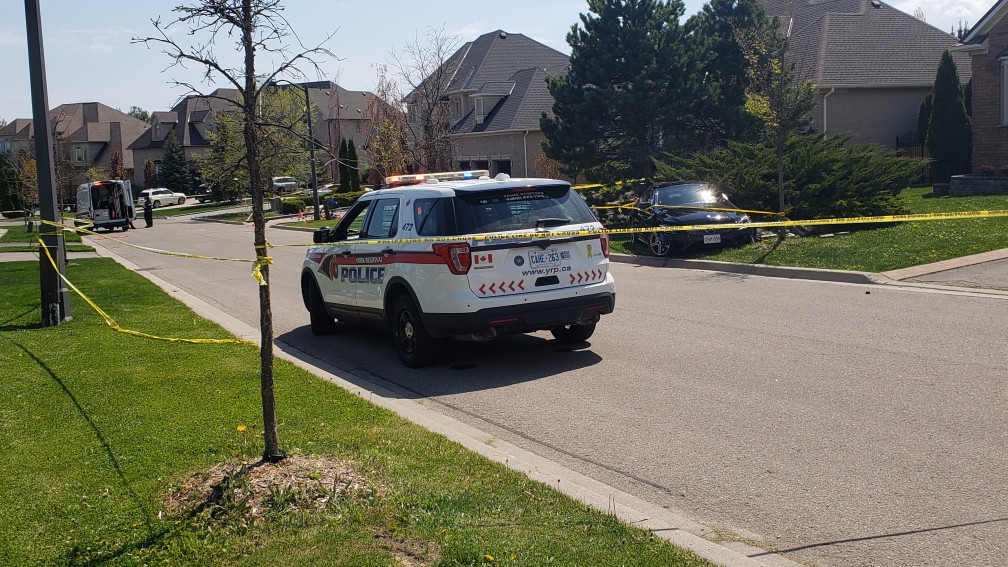
The family of two young siblings tragically struck and killed by a vehicle in Vaughan on Sunday has released a statement through York regional police.
“We are extremely traumatized by the tragic loss of our daughter and son,” the family said. “The past days have been extremely difficult for our family. We appreciate the prayers and thoughts of all those grieving with us.”
Police added that the family is requesting privacy and don’t want names or photos of their children released at this time.
The children, a 10-year-old girl and four-year-old boy, both died after they were struck by a car that veered off the road on Athabasca Drive, just off Dufferin Street north of Teston Road on Sunday around noon.
A neighbour who was with the children was also hurt, but his injuries were not life-threatening.
“The children were outside enjoying the weather, riding their bikes and a neighbour had come over to help with the bike chain,” explained York Regional Police Const. Laura Nicolle. “They were out on the driveway on their own property when the vehicle lost control, went off the roadway and collided with all of them.”
Photos from the scene show a black Mercedes sitting on a lawn, wedged underneath a tree and police evidence cones can be seen a few houses down.
Police said a 16-year-old driver from Richmond Hill was taken into custody and has been charged with:
- Dangerous Operation Cause Death x2
- Criminal Negligence Cause Death x2
- Two counts of Dangerous Operation Cause Bodily Harm
- Two counts of Criminal Negligence Cause Bodily Harm
In a release Tuesday night police added that a Go Fund Me page for the family was not authorized by them.
“The family has advised that this was not created by them and has not been discussed with them in any way.”
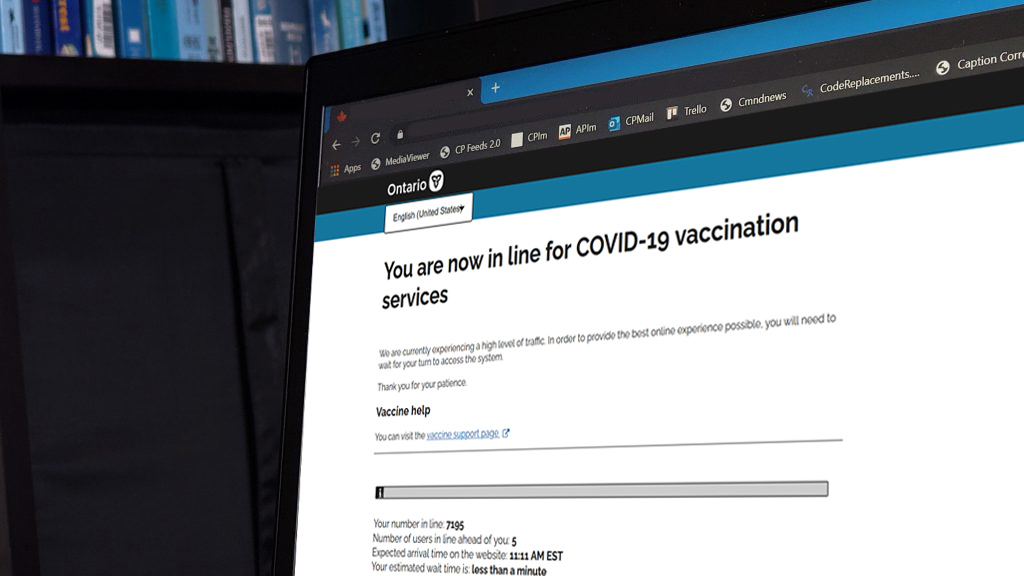
Ontario says starting at 8 a.m. Tuesday, anyone aged 18 and over will be able to book their COVID-19 vaccine appointment through the province’s online booking portal.
Those who are turning 18 this year will be able to book their appointments for the Pfizer vaccine, which is the only vaccine authorized by Health Canada for use in youth aged 12 and over.
Appointments can also be made via the provincial call centre at 1-833-943-3900 or through public health units that use their own booking system.
The government had initially said it would lower the vaccine eligibility age to 30 this week and all adults as of next week.
The province said the expansion comes a week ahead of schedule due to “an early delivery of the week of May 24 shipment.”
The federal government expects around 4.5 million doses to arrive this week from Pfizer-BioNTech and Moderna.
The mayors and chairs of the Greater Toronto and Hamilton Area (GHTA) say they welcome the news and are requesting additional vaccine supply to keep up with the increased demand that will follow expanded eligibility.
The province is also switching gears in how it distributes vaccines. It will now send the shots to regions on a per-capita basis, after two weeks of sending half the vaccine supply to COVID-19 hot spots.
Provincial health officials said those aged 12-17 will be eligible to book their COVID-19 vaccine on May 31, and will hold dedicated youth vaccine clinics during the weeks of June 14 and 21.
Earlier this month, the Ontario expanded vaccine eligibility to those 18 and over who live in one of the 114 hot spots.
The province said it hopes to see all eligible Ontarians fully vaccinated by the end of September.
As of 8 p.m. Sunday, the province administered more than 7.1 million doses of a COVID-19 vaccine, and so far, 432,000 Ontarians have been fully vaccinated.
More than 55 per cent of Ontarians aged 18 and over have received one dose of the vaccine.
With files from The Canadian Press

Ontario’s Minister of Health Christine Elliott says outdoor sports amenities will reopen in just over two weeks, possibly even before the province’s stay-at-home order expires.
The comments followed the defeat of an NDP motion at Queen’s Park to reopen outdoor amenities like golf courses and tennis courts on Monday, by a vote of 63 to 21.
Elliott said while the weather is getting better every day, “today is not the day to open everything up.”
“I believe it would be irresponsible for us to do that today,” she said. “But we are following the evidence on a daily basis and it will happen on or before June 2.”
She added that events, summer camps, golf and tennis are all slated for reopening if clinical evidence supports it.
NDP leader Andrew Horwath said the Ford government was going against scientific data and advice.
“What we see here is a government that continues to not follow the science and not follow the advice of public health and their own science table, she said. “That has meant that people have not been able to participate in outdoor activities safely like golf, like shooting hoops, skateboarding those kinds of activities’
Ontario’s second stay-at-home order went into effect on April 8 and was initially set to expire in four weeks. It was then extended to six weeks on April 16 and set to expire May 20. Last week, a second extension was announced, pushing the date back to June 2.
At the time, Premier Doug Ford said his goal was to have the most normal July and August as possible and the extension was necessary to make that happen.
Many have been calling for the reopening of outdoor recreation activities even while the stay-at-home order is in place, including those on Ontario’s COVID-19 Science Advisory Table.
The scientific director of the advisory table, Dr. Peter Juni, has said outdoor activities like golf, tennis and beach volleyball are low risk and if physical distancing cannot be maintained during such activities, people should wear masks.
However he added that activities linked with the sports — like car-pooling or sharing a locker room — will need to be addressed as they pose a greater risk of COVID-19 exposure.
Ontario’s Medical Officer of Health Dr. David Williams also said the reason outdoor recreation facilities remain closed is not because the activity itself that is risky, but the other actions surrounding them.
“When you open up a lot of facilities, it’s not sometimes the activity, it’s the congregate activity before and after,” he said last week.
Premier Ford has said reopening the province depends on vaccination rates, which shifted into high gear over the weekend as the province administered its seven millionth dose.
“The more people can come out [to get vaccinated], the quicker we can open up. And we are going to open up very, very soon,” he said, adding that summer camps will be open this year.
Vaccination eligibility has now been expanded to anyone 18+ starting Tuesday, almost a week ahead of the original May 24 date due to an early delivery of vaccine shipments.
Ontario’s COVID-19 case numbers have seen a slow decline in recent weeks, with the province reporting 2,170 new COVID-19 cases and 4 additional deaths on Monday.
With files from Richard Southern
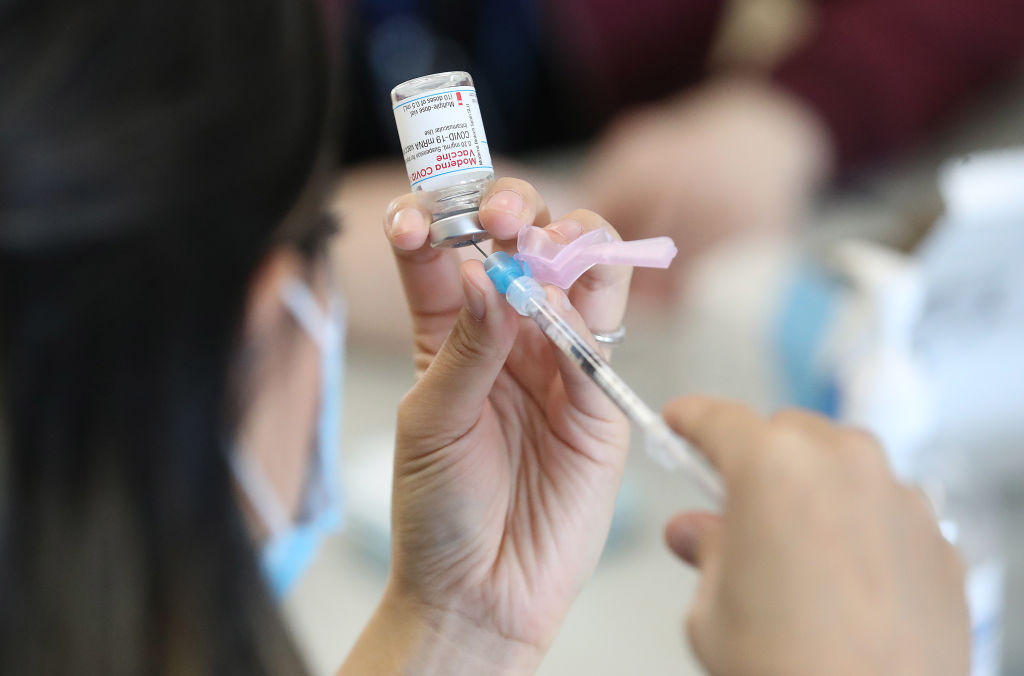
Ontario health officials say they are hopeful the current four-month interval between COVID-19 vaccine doses will be reduced as vaccine supply increases and more people get their first shots.
Provincial medical officer of health Dr. David Williams said the decision to increase the interval of the vaccines from the manufacturer recommended three or four weeks to four months was made to ensure “maximum benefit in the shortest time, with everybody getting one dose.”
That goal has been largely achieved with almost 60 per cent of the province’s population vaccinated with the first dose, he said.
“As we go forward … and we get lots of vaccine supply, we’re not going to leave it in fridges,” said Dr. Williams. “If we feel that we can go on to second doses with people, we certainly will — we won’t wait for the four months. We would like to do it sooner if we can.”
Dr. Williams added that along with supply, the decision will be influenced by how quickly all age groups are vaccinated with their first dose. The province expanded vaccine eligibility to all those 18 and over, starting Tuesday.
He also said that future second dose appointments that have already been booked are not set in stone. The province’s Covax booking system is flexible and appointments can be adjusted as per supply.
Ontario’s associate medical officer of health Dr. Barbara Yaffe added that she does not foresee the gap becoming “really short,” especially for the AstraZeneca vaccine.
“We want to make sure that people have enough of an immune response to the first shot,” she said. “With AstraZeneca usually, if you wait a little longer you get a better response to a booster, but we may not need to wait the full four months.”
Concerns have also been raised regarding the wastage of AstraZeneca doses being held in stock that are set to expire soon.
Dr. Williams said that while a 12-week gap between shots is best for the AstraZeneca vaccine, he is also not willing to wait and give expired vaccines “at all under any means to anyone in Ontario.”
“That would be totally wrong,” he said. “If we can’t use it all, that is what we have to face.”
However, he added that the government is going to try and see if those vaccines can still be utilized before expiration “in a safe way, efficaciously … and with the proper protocols in place.”
He said that currently, not many people have reached the 12-week mark after the first shot and said that getting a second dose too soon will mean less than maximum benefits.
“But some may say ‘that’s fine with me’ … so we’re looking at how we might do that,” he said.
Another factor playing into the issue is where the vaccine is located. Dr. Williams said it is best not to move it around too much in order to avoid compromising the “cold chain” — the protocols in place to keep the vaccine at a sufficiently low temperature.
“It’s not just a matter of [having it], it’s a matter of where is it located and can we utilize it in a way, first that is effective, second it’s safe — the quality is maintained — and that the people receiving it fully understand if they’re getting it before 12 weeks — what does that mean? and how important is that to that person.”
He concluded that informed consent is vital and that safety and quality are the “top priority.”
“We’ll try to do what we can and utilize [the doses in stock], but expiration dates are expiration dates and you have to hold to that rule and you can’t utilize it past that date,” he said.

A second child has died of their injuries in hospital following a car crash in Vaughan Sunday afternoon.
Police said around noon, they received calls about a car going off the road on Athabasca Drive, just off Dufferin Street north of Teston Road, and hitting three people.
“A 10-year-old girl and a four-year-old boy were taken to hospital with life-threatening injuries,” police said in a news release late Monday evening. “Both children have since succumbed to their injuries in hospital.”
An adult male was also hurt and his injuries were non-life-threatening.
“The children were outside enjoying the weather, riding their bikes and a neighbour had come over to help with the bike chain,” explained York Regional Police Const. Laura Nicolle. “They were out on the driveway on their own property when the vehicle lost control, went off the roadway and collided with all of them.”
Photos from the scene show a black Mercedes sitting on a lawn, wedged underneath a tree and police evidence cones can be seen a few houses down.
Police said a 16-year-old driver from Richmond Hill was taken into custody.
Const. Nicolle said the crash happened in an area where the speed limit was 40 kilometres an hour, so officers would be looking at whether speed was a factor in the collision.
On Monday evening, police said they would upgrade the charges against the teen to two counts of Dangerous Operation Cause Death, two counts of Criminal Negligence Cause Death, Dangerous Operation Cause Bodily Harm and Criminal Negligence Cause Bodily Harm.
Editor’s note: Police corrected the age of the driver to 16 years old after initially saying he was 17 years old and also corrected the age of the other injured child to 10 years old after previously saying she was 11 years old.
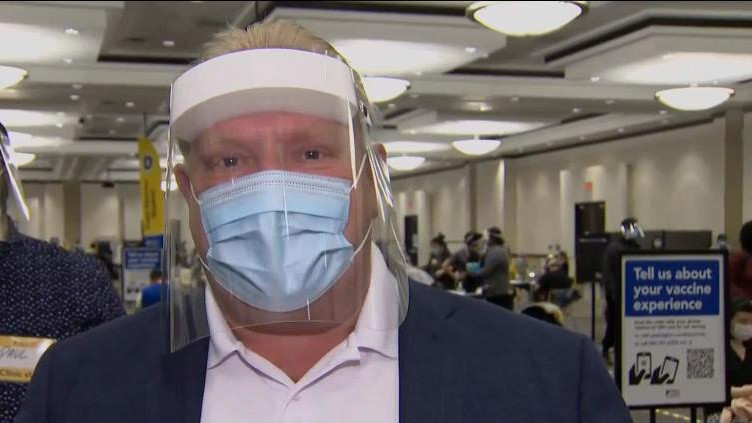
Ontario’s COVID-19 vaccine effort shifted into high gear on the weekend, administering its seven millionth dose as it prepared to accelerate immunization efforts even further in the coming week.
Premier Doug Ford, meanwhile, offered hope that the province’s summer camps would be given the green light to operate this season, though without providing any details.
Ford stated camps would be able to open for the coming summer, though did not specify whether he was referring to day or overnight facilities.
“The more people can come out [to get vaccinated], the quicker we can open up. And we are going to open up very, very soon,” said Ford. “And I have to say one thing about the summer camps — July 3 is usually the time they open and they’re opening up this year.”
A spokesman from his office later said details would be revealed before the provincial lifts if current stay-at-home order, which was recently extended to June 2 in a bid to help combat the pandemic’s third wave.
The Ontario Camps Association said it was “thrilled” by the Premier’s announcement.
Ford’s remarks came at a large vaccine clinic held west of Toronto that operated overnight in a bid to provide shots to those who could benefit from extended hours.
Organizers of Doses After Dark, which they dubbed the first mass overnight vaccination clinic in Canada, said it was well attended but may not have achieved the goal of vaccinating between 4,500 and 5,000 people through the night.
Paul Sharma, co-lead of Peel Region’s mass vaccination program, said the overnight clinic aimed to attract a wider range of people from across a region that’s long been one of the province’s most active COVID-19 hot spots.
“This was really targeted toward essential workers who are working non-traditional hours,” he said in an interview on Sunday. “Shift workers, taxi drivers, truck drivers ? but also to the younger age group, you know, the 18 to 39 (demographic), which we opened up a few weeks ago.”
Although a formal count of shots administered at the clinic was not immediately available, Sharma estimated that it reached 60 to 70 per cent of its target.
Despite the shortfall, however, Sharma said there was only a brief stretch between 1 a.m. and 7 a.m. when the clinic wasn’t operating at full capacity.
“People are interested in getting their vaccine. They’re willing to come in all different hours,” Sharma said.
In addition to essential workers, Sharma said international students without provincial health cards and people aged 65 and above who had been eligible for some time also attended the clinic.
It took place ahead of the latest effort to speed up Ontario’s broader vaccination program, which is set to begin including all residents 30 and older later this week.
Monday will also see the province revert back to a per capita model of vaccine allocation after diverting half its supply to hot spots with high daily case counts over the past two weeks.
The province announced last week that it aims to have all willing adults in Ontario fully immunized with two doses by Sept. 22. All adult residents should be eligible to register for their first jab by the end of May.
Vaccine expansion efforts were already reaching new heights over the weekend, according to Health Minister Christine Elliott, who reported the province had delivered more than seven million doses as of Sunday morning. More than 139,000 of those were injected on Saturday alone, she added.
The province also reported 2,199 new COVID-19 cases on Sunday, including 30 more virus-related deaths. Those figures were based on 33,142 tests administered over the previous 24 hours.
There were 1,292 COVID-19 patients in Ontario hospitals as of Sunday morning, a decline of 254 from the day before.
Of those patients, 714 were in intensive care and 509 were on ventilators.

Travellers in England were packing their bags, bartenders were polishing their glasses and performers were warming up as Britain prepared Sunday for a major step out of lockdown – but with clouds of worry on the horizon.
Excitement at the reopening of travel and hospitality vied with anxiety that a more contagious virus variant first found in India is spreading fast and could delay further plans to reopen.
Prime Minister Boris Johnson urged Britons to “take this next step with a heavy dose of caution.”
“We are keeping the spread of the variant first identified in India under close observation and taking swift action where infection rates are rising,” he said. “I urge everyone to be cautious and take responsibility when enjoying new freedoms today in order to keep the virus at bay.”
Cases of the variant have more than doubled in a week in the U.K., defying a sharp nationwide downward trend in infections and deaths won by hard-earned months of restrictions and a rapid vaccination campaign. A surge testing and stepped-up vaccination effort was being conducted in the northern England areas hardest hit by that variant.
Health Secretary Matt Hancock said the variant, formally known as B.1.617.2, is more transmissible than the U.K.’s main strain and “it is likely it will become the dominant variant.”
On Monday, people in England will be able to eat a restaurant meal indoors, drink inside a pub, go to a museum, hug friends and visit one another’s homes for the first time in months. A ban on overseas holidays is also being lifted, with travel now possible to a short list of countries with low infection rates. Scotland, Wales and Northern Ireland are following similar but slightly different reopening paths.
Patrick Dardis, chief executive of brewery and pub chain Young’s, said the indoor opening – which follows the reopening of outdoor patios and beer gardens last month – is “a big step back on to the path to normality.”
“The weather has been pretty dire, and people are hardy, but we really needed this next step to come,” he said.
But hospitality and entertainment venues say they won’t be able to make money until they can open at full capacity. That’s due to happen June 21, the date set by the government for lifting its remaining COVID-19 restrictions, including social distancing and mask-wearing rules.
Johnson has said if the new variant causes a big surge in cases, it could scupper that plan.
Britain has recorded almost 128,000 coronavirus deaths, the highest reported toll in Europe. But new infections have plummeted to an average of around 2,000 a day, compared with nearly 70,000 a day during the winter peak, and deaths have fallen to single figures a day.
Almost 70% of British adults have received a first dose of a coronavirus vaccine, and more than 38% have had both doses.
Health officials, backed by the army, are carrying out surge testing in Bolton and Blackburn in northwest England, where cases of the new variant are clustered. Pop-up vaccination sites have been set up to speed the inoculation drive, with authorities aiming to inoculate all members of multi-generational households to stop the variant spreading within families.
Across the country, the government is shortening the gap between doses for people over 50 from 12 to eight weeks in a bid to give them more protection.
Hancock said scientists had a “high degree of confidence” that current vaccines work against the Indian-identified variant.
Critics of Britain’s Conservative government say lax border rules allowed the new variant to enter the country. They accuse the government of delaying a ban on visitors from India, which is experiencing a devastating coronavirus outbreak, because it is seeking a trade deal with the vast country.
India was added to the U.K.’s high-risk “red list” on April 23, weeks after neighbors Pakistan and Bangladesh.
“We shouldn’t be in this situation,” said opposition Labour Party lawmaker Yvette Cooper. “This was not inevitable.”
The government denies that its health policies were influenced by political or trade considerations.
Mark Walport, a member of the government’s Scientific Advisory Group for Emergencies, said Britain was at a “perilous moment,” and people should be cautious with their new freedoms.
“My advice is that just because you can do something doesn’t necessarily mean you should,” he told Sky News. “As far as possible, socialize outside, maintain social distancing. If you’re going to hug, hug cautiously.”

Graduation has been the topic of conversation between 17-year-old Anoosha Keshav and her friends for months.
After their last two years of high school were interrupted by the COVID-19 pandemic, the Mississauga, Ont., teen and her peers crave a little normalcy to mark the end of this stage in their lives– not another pared down, online-only event.
“It comes up in almost every conversation,” she said. “The fact that it’s going to be a pre-recorded video you’ll have to watch, it’s really disappointing. It’s not motivational, you know, because we’re almost there at the end, and it’s really sad that this is how our graduation is going to be.”
So Keshav has come up with an alternative. She’s calling on the Ontario government to allow COVID-safe outdoor ceremonies, complete with physical distancing and personal protective equipment.
“This is something really important for us,” she said. “We do want to celebrate this milestone properly, especially considering that we have spent the entirety of our senior year in a pandemic and half of our junior year, as well.”
Keshav is not alone in her desire for an outdoor ceremony.
An online petition she started less than a week ago had garnered more than 9,700 signatures by Sunday morning. They come from people identifying themselves as students, teachers and parents.
“I would like to have at least one memorable Grade 12 experience,” one signatory wrote.
“This year has been full of disappointments, let’s not end on one,” said another.
For 18-year-old Nathalia Aranda of St. George, Ont., losing an in-person graduation would mean missing out on long-awaited — and hard-earned — recognition.
“When you leave high school, you’re not just leaving with a diploma, you’re leaving with other characteristics like honor roll, scholarships, and your future goals are announced. And I believe that it’s really significant for us students to get that recognition for all we’ve worked for,” said Aranda, who signed the petition on Saturday.
She said she’s been planning for her graduation ceremony since Grade 9, and had hoped to use it to pay tribute to her roots after moving from Colombia when she was younger.
“I really wanted to walk across the stage and hold up my flag just to show anyone can make it here,” she said. “And that’s really what my plan was. And now I kind of can’t do that because it is on Zoom.”
The push for in-person graduation ceremonies comes as Ontario continues to tackle the pandemic’s third wave, with the province extending a stay-at-home order until at least June 2.
Students across Ontario have been learning remotely for more than a month and it’s not yet clear whether they’ll return to the physical classroom before summer break begins, even as vaccination efforts ramp up.
The province is aiming to open up vaccination appointments to everyone 18 and up by the week of May 24, and it’s hoping to start vaccinating teens between the ages of 12 and 17 in June.
But it remains to be seen how many youth will receive their first dose of the Pfizer-BioNTech shot — the only one approved for use in minors — in time for grad ceremonies, which typically happen towards the end of June.
A spokeswoman for Education Minister Stephen Lecce said he’s looking into the feasibility of outdoor ceremonies.
“Ontario students deserve this positive conclusion to their academic journey, safely,” Caitlin Clark said in an email. “We are actively working with the Chief Medical Officer of Health on this in order to preserve these opportunities to proudly recognize the incredible success and achievement of our students.”
But some school boards say that even if the province gives the green light, it may be too late to organize an in-person ceremony.
The Dufferin-Peel Catholic District School Board, for instance, said organizing such events and keeping them safe present significant hurdles.
“If the stay-at-home order is ended, there would very likely be outdoor gathering restrictions in place that limit numbers. We have graduating classes that would be over 400 students,” Bruce Campbell said in an email, adding that Peel is among the biggest COVID-19 hot spots in the country.
“(The board) has made the decision, in consultation with our public health units, to go with virtual graduation events again this year.”
The secular board in the same area, the Peel District School Board, made the same choice.
It’s been planning for virtual celebrations since February, using last year’s online-only ceremony as a template. That event featured recorded performances from students and alumni and was viewed by more than 10,000 people.
Keshav, however, feels there’s a distinct difference between this year and last.
“The class of 2020, its graduation was just a couple months after the pandemic started,” she said. “Now it’s been over a year, and since then, we’ve learned a lot. Organizers know how to make events different. There’s a lot of adaptations that can be made. I think doing a graduation now is a lot easier than it would have been last year.”
This report by The Canadian Press was first published May 16, 2021.









